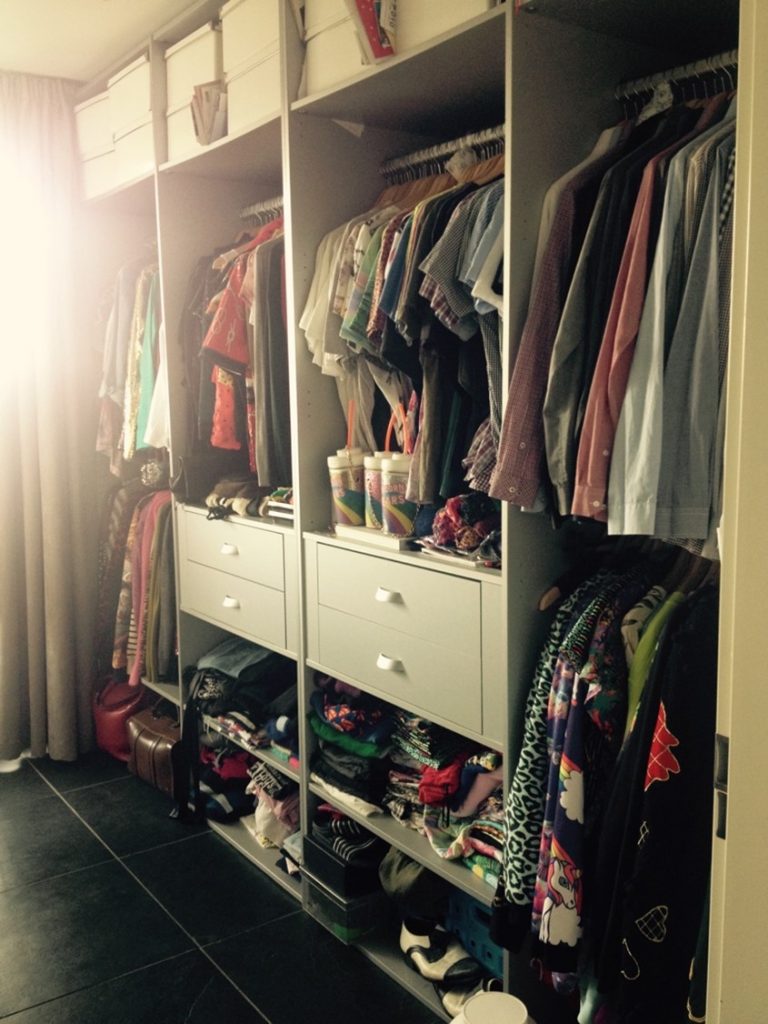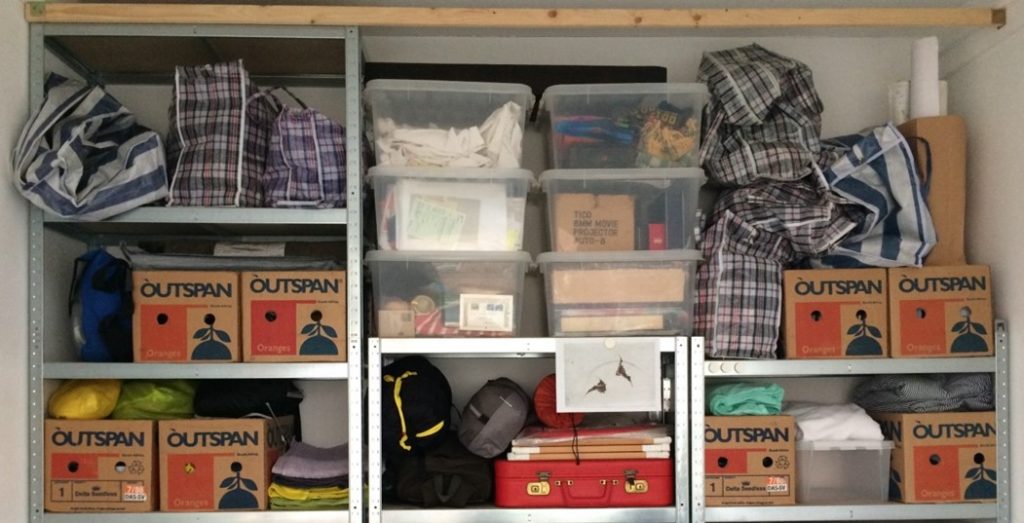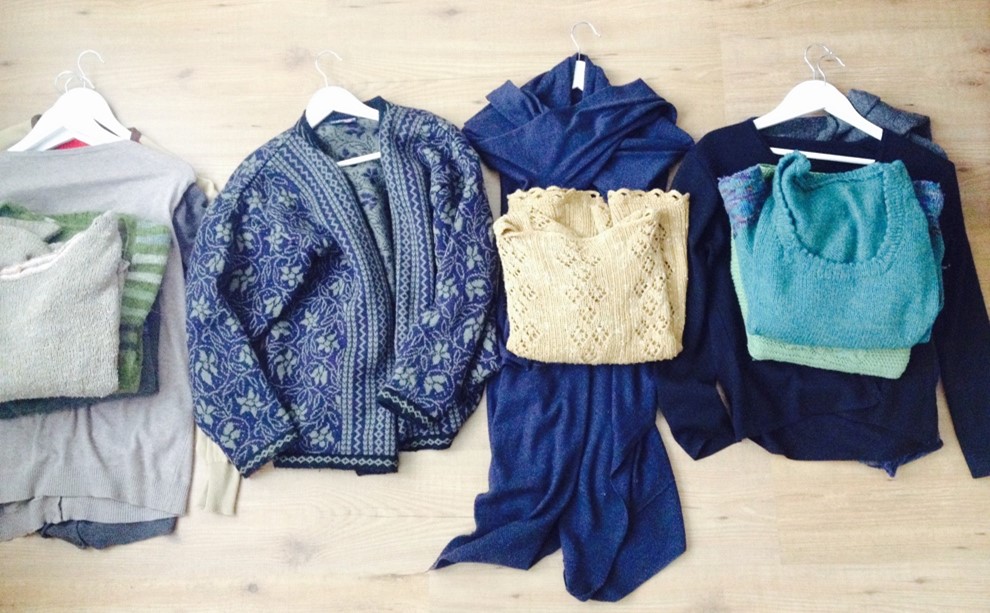Irene Maldini – Comparative study of personalized and ready-made wardrobes in the Netherlands
Irene Maldini, at the time (2017/2018) affiliated to the Amsterdam University of Applied Sciences as a PhD candidate. Background in industrial design, design for sustainability, design history and theory.

Aim of the study: scientific knowledge creation
Definition of terms:
- Personalised garments: garments involving the user in their design, and being produced on demand (resulting from bespoke tailoring, made-to-measure, mass customization, home or self-production and do-it-yourself)
- Ready-made garments: garments produced without user input
- Personalised wardrobes: Wardrobes including at least ten personalised garments
- Ready-made wardrobes: Wardrobes including only ready-made garments
Hypotheses:
- Personalised wardrobes are smaller than ready-made wardrobes
- Personalised wardrobes’ inflow is smaller than ready-made wardrobes’ inflow
- personalised items are used more often than ready-made garments
- personalised items are kept for a longer time than ready-made garments
Inspiration: Available wardrobes studies at the time including the methods in the “Opening up the wardrobe” book.
Novelty: comparative and quantitative approach.
Participants:
| Definition | Description and recruitment | |
| Respondent group P | Subjects whose wardrobes include at least ten personalised garments (personalised wardrobes) | 20 subjects recruited from our network. 10 respondents are consumers of custom-made clothing and 10 make clothes for their own use. |
| Respondent group R | Subjects whose wardrobes do not include personalised garments (ready-made wardrobes) | Control group. 20 subjects with similar demographic characteristics to (and mostly indicated by) participants in respondent group P. |
The wardrobe studies included 40 subjects living in different provinces of the Netherlands. The group is varied in terms of age (22 to 71 years old), gender (24 females and 16 males, equally distributed in groups P and R), household composition (living alone, in couples, with children, or in shared households) and income (from <20,000 € to > 80,000 € annual gross income per household). Most of respondents live in cities, but ten subjects live in villages and towns; these are equally distributed in groups P and R.
Protocol:
Includes a complete wardrobe audit and registration of all garments coming in and out of the wardrobe in a 6-month period (the latter completed by 25 of the 40 participants). In group P, two garment types including both personalized and ready-made garments are chosen by respondents, for instance all sweaters and cardigans, or all trousers. They are requested to organise such items in 5 categories based on usage (used always, frequently, average, rarely and never) and age (old, relatively old, average, relatively new and new).

Analysis:
The number of items owned by both respondent groups were statistically compared, as were the number of items coming in their wardrobes in a 6-month period. No statistical differences were found.
For the comparison of age and usage in personalised and ready-made garments (same user and garment type), the number of personalised and ready-made items in each of the five categories listed above were documented, we assigned a value to each category, and divided the total value by the number of items in the garment type (keeping personalised and ready-mades separately). Lastly, we statistically compared the resulting score for personalised and ready-mades items in the same garment type, further using data visualisation to discuss the qualitative findings.
No statistical difference was found for garment usage. For garment age, and contrary to one of the study hypotheses, the age of ready-made garments was bigger than that of the personalised garments, meaning that ready-mades were kept for longer.
Results:
None of the hypotheses of the study was confirmed, but we expected that to be the case. The hypotheses were based on the assumptions of other people in the field, and we suspected that these did not meet reality.
Unexpected finding:
The results of the inflow-outflow exercise made me realise that the whole idea of reducing the demand of clothing based on product lifetime extension did not apply in reality, because clothing consumption dynamics do not follow a logic of replacement. Keeping a garment in the wardrobe, even if it is actively used, does not stop people to purchase other items. Inflow and outflow are only sometimes and indirectly connected. This finding, which was not considered in the design of the study, has been central in my work since then.

Development of methods since then:
Wardrobe audits (counting the number of garments owned) have been used by others before and after this study.
Methods partially based on the inflow-outflow registration are being used by Vilde Haugrønning in her PhD (which I co-supervise). Moreover, I am planning a new research project using such an approach for all consumer goods in the household. This method can give insights about clothing consumption dynamics, the relations among garments and the causes and consequences of wardrobe movements (inflow and outflow).
To my knowledge, the quantitative comparison of garments used to assess age and usage has not been further developed or used. This (more complex) method can have a variety of uses. For instance, to compare the use value of garments made of different materials or shapes. This method was developed after testing other ways of understanding garment age and use frequency that did not work. People do not remember how long they have owned things or how often they use them. However, comparing is much easier for them and they are more confident about their responses. That was a main reason to use this method, next to the possibility of analyzing the data quantitatively.
Use of results since then:
This study has been referenced by others to question the environmental value of product personalization. The limitation of durability (the secondary finding of the study) has had more repercussions, due to the importance given to product longevity in clothing environmental policy. We (OsloMet colleagues and I) have referred to this study in numerous policy briefings, reports, articles, and talks to explain why the focus needs to be placed on production volumes rather than product durability, expecting that volumes will be reduced in an indirect way.
Recommendation:
Always run a pilot of your study and analyze the results before designing the final study
This study has been key in the following publications:
Maldini, Irene and Pieter J. Stappers. 2019. “The Wardrobe as a System: Exploring Clothing Consumption through Design Fiction.” Journal of Design Research 17(1):3–25. (researchgate.net)